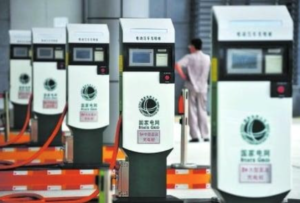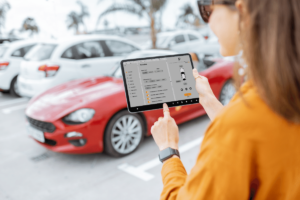
The development of China’s aftermarket Categories: 2021, News Timelines: China
Announcement Date : 1 Oktober 2021
Digitization
In 2021, under the influence of the demographic dividend disappearing, consumption upgrading and global epidemic, industrial internet track has ushered in unprecedented development opportunities in China, and digital technology is accelerating the collaboration between the upper and downstream of the industrial chain. The increasing and aging of the car parc drives the aftermarket rapid development and has become a new growth point in the automotive industry.
The plates of the automobile have continued to recover, the trading volume of second-hand cars is orderly rise again after a fall, the car modification, the scrapped car recycling is stable, sharing travel, and the charging facilities are rapidly developed. At the same time, the digital iterative upgrade speed in the whole industry is significantly accelerated.
Although the European and American automotive industry has a hundred years of history, China’s automobile market has only a short explosion period for 20 to 30 years, but the development of China’s aftermarket still has its own advantage.
First, China’s supply chain can be supplied globally, in the entire automobile industry chain, especially basic parts, China’s supply chain advantage is relatively strong. Europe and the United States have enjoyed the bonus of “Made in China” for many years, but China has not fully enjoyed the bonus itself, this still has certain contradictions.
Second, China’s market must be the world’s largest, through the data we have at the end of 2020, China’s car parc has reached 281 million. So, China’s car parc officially exceeded the United States, and became the biggest market in the world.
Finally, China’s Internet and digital application is stronger than any country in the world.
In the superposition of three factors, the digital transformation of Chin’s automotive aftermarket will be full of opportunities and challenges.
Greatly increase of the ratio of online maintenance booking and second-hand car trading
Ordering authentic parts or maintenance package through JD APP in mobile phone and then booking services to the nearest JD chain garage has become a customary choice for many Chinese drivers. Convenient and standardization, cost-effectiveness is the main reason for choosing JD chain garage.
The JD chain garage is quickly opening the aftermarket based on the systematic and standardized chain system, low price, and high efficiency brought by the digital supply chain. At present, JD chain garage has opened more than 1,200 chain stores, serving more than 1 million online users.
Except for digital smart service stores, the car maintenance track has also swarmed into the aftermarket-focused players like Tuhu, the new force which supports by capital and technology, while improving the overall online rate of the industry, it also brings great pressure to the traditional 4S stores and independent mechanical garages.
Traditional car manufacturers have started working in the aftermarket to promote basic digital service layouts.
Additionally, the path of the digital revolution of the second-hand car business is very clear, and the sales of “Internet + second-hand car” have been climbed for several successive years.
In recent years, the car manufacturers have noticed that the market has transferred from seller’s market to buyer’s market, gradually guiding 4S and distributors to force the second-hand car business. The dealer has also begun to promote the digital upgrade of the second-hand car business, find new profit points, speed up the development of purchasing, pricing, and customer relationship management system of second-hand car business, also conduct the corresponding layout in terms of professional talent reserves.
Charging infrastructure acceleration
With the increase in the number of new energy vehicles in China, the charging infrastructure market has developed rapidly.
China Electric Charging Infrastructure Promoting Alliance released the latest operational data. As of the end of February this year, the total number of charging infrastructure in the country reached 17.58 million units (including public charging piles and private charging piles), a year-on-year increase of 41.2%.
The construction of charging pile is not only an important factor in promoting new energy vehicles. On the other hand, the charging pile itself is also information piles, data piles, and network piles, and can promote the field of transportation and even the entire social digital development.
At present, there is a growing development in the battery switching mode. Nio is a representative enterprise that mainly popularize battery switching mode, as of March 23, has been deployed in the national deployment of the 193 battery switching stations, 134 supercharger stations, 326 destination charging stations.
China Electric Vehicle Charging Infrastructure Promotion Alliance said that in the „14th Five-Year Plan“ period, new energy vehicles sailed to fast lanes, fast-growing demand of the charging, and the depth integration of the car network enables the industry to play an important role in energy structure adjustment. And the cross-border integration of new energy automobile network linkages will allow the charging facility industry to usher in an important opportunity. Besides, charging infrastructure will still face many serious challenges, including how to significantly improve user satisfaction, how to solve the problem of building piles and disorderly piles in residential district, and how to build an efficient and convenient charging network.
Many industry experts have put forward the management model of „unified planning, unified construction, unified operation“. In this regard, we believed that this mode will increase user cost, but the increase is not much, the user should accept. Also, the popularity of new energy vehicles has spawned the charging industry. This new industry involves multiple government management departments, which also involves more and more people’s vital interests and needs to handle benefits.
















